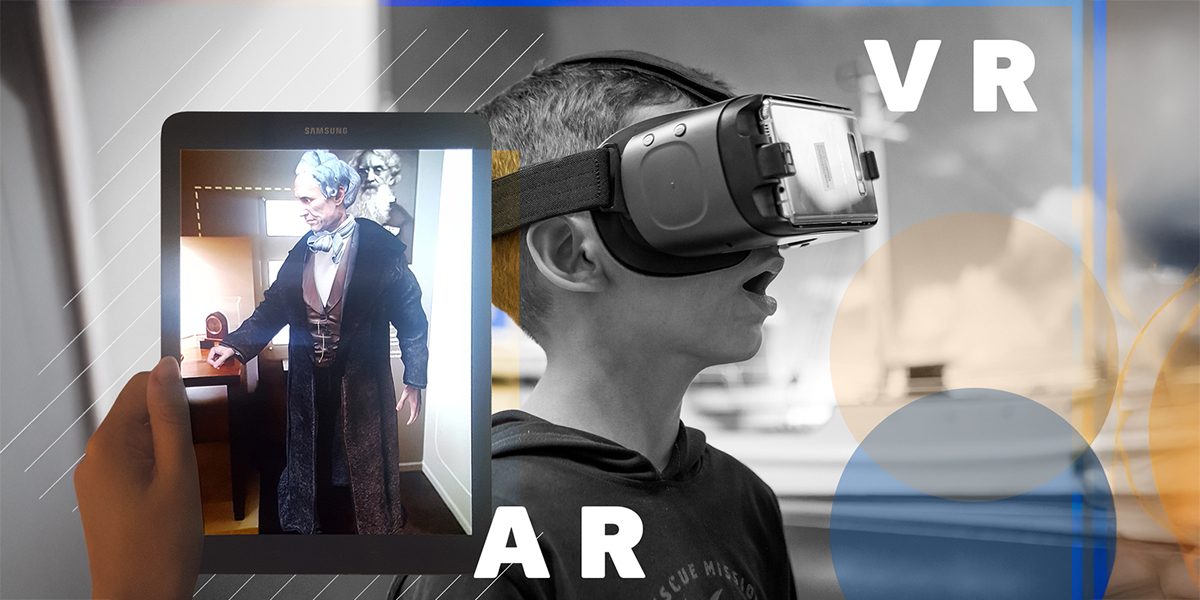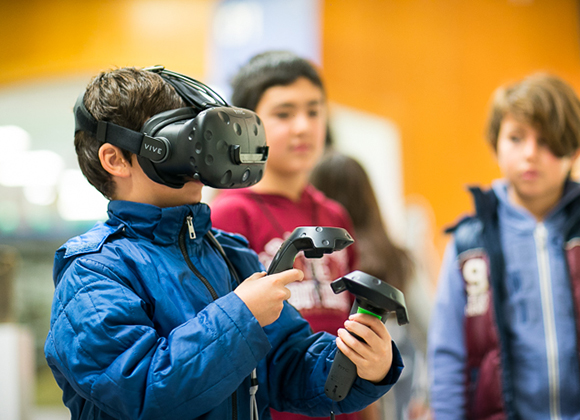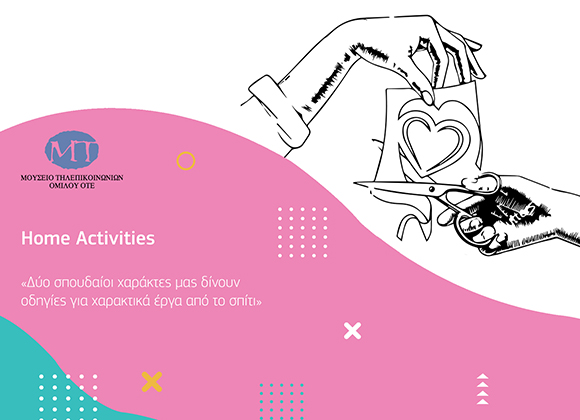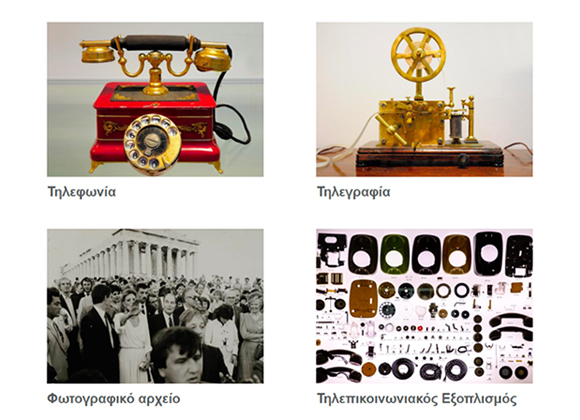Digital Museum: a journey of continuous evolution

In today's information society, digital technology is an essential tool for museums. It is no longer limited to digitizing and documenting collections, but is transforming the way museums educate, research, and tell their stories. The digital environment enhances the preservation of cultural heritage, broadens public access and creates new, interactive experiences both inside and outside the physical space of the museum.

Digitization of collections begins / 2014-2016
Responding to new digital needs and opportunities, in 2014 the Museum launched an extensive program to digitize and document its collections. By 2016, approximately 23,000 items (objects, telephotographs, telegrams, photographs, etc.) had been digitized, and the process continued with the aim of covering the entire collection, which now numbers more than 37,000 items. For their organization and promotion, the Museum acquired the MuseumPlus collection management system, through which researchers can search and study the items online.

Digital outreach and award from ICOM / 2016-2018
In 2016, the Museum launched its own website with online booking for its school and family programs, and in 2017, it created an Instagram account in an effort to reach a digital audience. In the same year, it organized an innovative program for families, utilizing virtual and augmented reality (VR & AR) technologies, entitled "Virtual & Augmented Reality Museum Lab." At the same time, in 2018, it added AR technology to its permanent exhibition, creating a unique digital experience at six iconic points in the exhibition, an initiative that won first prize at the Mobile Excellence Awards 2020.

The integration of new technologies into the Museum's activities and exhibition was in line with the message of ICOM (International Council of Museums) for International Museum Day 2018: "Museums and (inter)networks. New Approaches, New Audiences." As part of this celebration, the Greek Section of ICOM named the Telecommunications Museum "Honorary Museum 2018," a very important distinction that highlighted its openness to the new digital era and the dynamic integration of innovative technological tools, but also, more generally, its important collections, scientific work, and educational activities.

The pandemic accelerates the digital experience / 2020-2022
With the advent of the Covid-19 pandemic in 2020, the need for a digital presence became more acute. The Museum's website presented the Digital Exhibition, with photographic material and descriptive texts on the Museum's most emblematic exhibits, presented in five thematic sections: Pre-electric Period, Electricity and Great Inventors, Telegraphy, Telephony, and the Television Studio. A Family Fun section was also created, offering children art workshops, painting, crafts, and games inspired by telecommunications. This material was designed specifically for digital use in order to keep children engaged with the Museum and offer them creative activities during the pandemic.

In 2021, the Museum's website was enriched with a virtual tour of the exhibition spaces. With a single click, visitors could not only tour the exhibition spaces, but also read additional information, watch videos, listen to audio clips, and connect specific exhibits to creative activities for the home. In addition, actor Pygmalion Dadakaridis took on the role of museum guide, bringing the stories of the exhibits to life in the documentary "Stories of Communication."

During the same period, online tours for schools were launched, as well as the Museum's first two digital art workshops: "The Museum in Our Suitcase" and "Musical Instruments from Recyclable Materials." Students from remote schools throughout Greece created visual arts "suitcases" and improvised musical instruments inspired by the exhibits. By 2025, when the program was completed, 8,608 students and teachers from Evros to Crete, as well as islands such as Tilos, Arki, Kasos, and Gavdos, had participated! Finally, in 2022, on the occasion of the 100th anniversary of the Asia Minor Catastrophe, the Museum designed the digital temporary exhibition "Telegraphy and Telephony. Stories of Communication before and after the Asia Minor Catastrophe," highlighting the evolution of telecommunications from the early 20th century to the end of the 1930s.

A fully digitized museum
Today, with a steady focus on digital transformation, the Museum has digitized over 90% of its collections. A representative sample of its artifacts is available on the Museum's website, in the "Collections" section—from telephone devices, telegraph instruments, and drawings to photographs, telegrams, and much more.
However, technology also adds a new dimension to a physical visit to the Museum. At 70 points throughout the exhibition, visitors can scan QR codes for additional content in Greek and English, as well as audio descriptions, while augmented and virtual reality bring the exhibits to life, making the history of telecommunications more exciting and interactive.

For the Telecommunications Museum, digitization is an ongoing exploration of a constantly evolving digital world that is developing alongside the analog one. The public is responding enthusiastically: digital visitors to the Museum's website increased by 200% in 2025 compared to 2024. As a technology museum, the Telecommunications Museum continues to invest in new digital tools and develop innovative activities, presenting the history of telecommunications in a contemporary and interactive way.
The use of artificial intelligence (AI) tools is the next challenge in the Museum's ongoing digital evolution. AI can offer new possibilities for enriching the visitor experience, for digital curation, documentation, and maintenance of collections, as well as for the digital upgrading of educational programs. The Telecommunications Museum remains a living organism of knowledge and culture, evolving alongside technology, but always keeping people and their need for communication at the center—the starting point of the history of telecommunications itself.

Photos
- Virtual reality (VR) and augmented reality (AR): new ways to explore the history of telecommunications at the Museum.
- Museums are moving into the next era through digital technology.
- The MuseumPlus collection management system.
- Children participating in the "Virtual & Augmented Reality Museum Lab" educational program in 2017.
- Museum of the Year 2018: an important distinction from ICOM for the digital dimension of the Telecommunications Museum.
- "Family Fun" brought the Museum into the home: crafts, games, and creativity for children from a distance.
- Pygmalion Dadakaridis during the filming of the digital tour in 2021.
- "The Museum in our suitcase": children show their work at the last stop of the program, in May 2025 at the Elafonisos Primary School.
- The Museum's collections available online with one click!
- From AR to AI: technology is constantly evolving.






